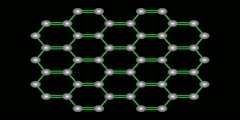Lec 25 - Models in 3D Space (1869-1877); Optical Isomers
"Lec 25 - Models in 3D Space (1869-1877); Optical Isomers" Freshman Organic Chemistry (CHEM 125) Despite cautions from their conservative elders, young chemists like Paternó and van't Hoff began interpreting molecular graphs in terms of the arrangement of a molecule's atoms in 3-dimensional space. Benzene was one such case, but still more significant was the prediction, based on puzzling isomerism involving "optical activity," that molecules could be "chiral," that is, right- or left-handed. Louis Pasteur effected the first artificial separation of racemic acid into tartaric acid and its mirror-image. 00:00 - Chapter 1. Venturing into 3-D Arrangements of a Molecule's Atoms 11:41 - Chapter 2. Exchanges between van't Hoff and Ladenburg on Aromaticity and Chirality 22:58 - Chapter 3. In-Class Observations and Experiments on Chirality 39:14 - Chapter 4. Louis Pasteur's Artificial Separation of Racemic Acid Complete course materials are available at the Open Yale Courses website: http://open.yale.edu/courses This course was recorded in Fall 2008.
Video is embedded from external source so embedding is not available.
Video is embedded from external source so download is not available.
Channels: Chemistry (General)
Tags: enantiomers diasteromers chirality chiral carbon Pasteur superimposability polarized light rotation
Uploaded by: yalefreshorganic ( Send Message ) on 05-09-2012.
Duration: 49m 2s
Here is the next lecture for this course
Lec 29 - Preparing Single Enantiomers and ...
50:19 | 2671 viewsLec 26 - Van't Hoff's Tetrahedral Carbon ...
48:26 | 2849 viewsLec 17 - An Ultrafast Optical Digital Tec ...
01:05:02 | 2548 viewsLec 24 - Stereoisomers, Enantiomers, Dias ...
13:36 | 3655 viewsLec 17 - Isomers: Stereo (Chiral)
04:13 | 2255 viewsLec 18 - Chiral Isomers (Quiz)
02:25 | 2125 viewsLec 31 - Preparing Single Enantiomers and ...
48:53 | 2505 viewsChemical Science -Transition Metals - Lec ...
50:39 | 17142 viewsLec 7 - Physics 111: Carbon Dioxide Laser ...
31:31 | 4779 viewsLec 31 - Physics 111: Optical Pumping (OPT)
32:54 | 3739 viewsLight coming from around a black hole for ...
01:04 | 15525 viewsHow Light Refraction Works?
09:34 | 8926 viewsChemical Science - Particle-like Nature o ...
47:32 | 16466 viewsCarbon Allotropes
09:57 | 16444 viewsChapter 8 Hubble Space Telescope
06:07 | 4443 viewsNo content is added to this lecture.
This video is a part of a lecture series from of Yale
Lecture list for this course
Lec 2 - Force Laws, Lewis Structures and Resonance
Lec 3 - Double Minima, Earnshaw's Theorem and Plum-Puddings
Lec 4 - Coping with Smallness and Scanning Probe Microscopy
Lec 6 - Seeing Bonds by Electron Difference Density
Lec 7 - Quantum Mechanical Kinetic Energy
Lec 8 - One-Dimensional Wave Functions
Lec 9 - Chladni Figures and One-Electron Atoms
Lec 10 - Reality and the Orbital Approximation
Lec 11 - Orbital Correction and Plum-Pudding Molecules
Lec 12 - Overlap and Atom-Pair Bonds
Lec 13 - Overlap and Energy-Match
Lec 14 - Checking Hybridization Theory with XH_3
Lec 15 - Chemical Reactivity: SOMO, HOMO, and LUMO
Lec 16 - Recognizing Functional Groups
Lec 17 - Reaction Analogies and Carbonyl Reactivity
Lec 18 - Amide, Carboxylic Acid and Alkyl Lithium
Lec 19 - Oxygen and the Chemical Revolution (Beginning to 1789)
Lec 20 - Rise of the Atomic Theory (1790-1805)
Lec 21 - Berzelius to Liebig and Wöhler (1805-1832)
Lec 22 - Radical and Type Theories (1832-1850)
Lec 23 - Valence Theory and Constitutional Structure (1858)
Lec 24 - Determining Chemical Structure by Isomer Counting (1869)
Lec 26 - Van't Hoff's Tetrahedral Carbon and Chirality
Lec 27 - Communicating Molecular Structure in Diagrams and Words
Lec 28 - Stereochemical Nomenclature; Racemization and Resolution
Lec 29 - Preparing Single Enantiomers and the Mechanism of Optical Rotation
Lec 30 - Esomeprazole as an Example of Drug Testing and Usage
Lec 31 - Preparing Single Enantiomers and Conformational Energy
Lec 32 - Stereotopicity and Baeyer Strain Theory
Lec 33 - Conformational Energy and Molecular Mechanics
Lec 34 - Sharpless Oxidation Catalysts and the Conformation of Cycloalkanes
Lec 35 - Understanding Molecular Structure and Energy through Standard Bonds
Lec 36 - Bond Energies, the Boltzmann Factor and Entropy
Lec Last - Potential Energy Surfaces, Transition State Theory and Reaction Mechanism















